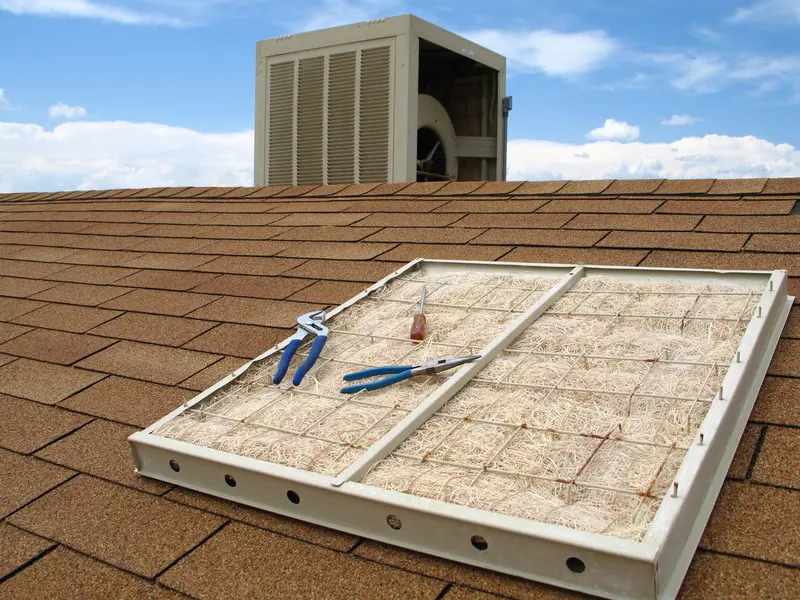Summer is here and warmer temps are here along with it for a while. So if you’ve found yourself facing the need for a new air conditioner this time of year, chances are that you’re in a bit of a rush to get one installed. We have to urge you, however, do not make this decision in haste. Doing so could leave you with an air conditioner that’s not quite right for your home—and therefore you’ll be paying for wasted energy and/or not achieving the comfort you deserve this season.
Perhaps you’ve been looking into your cooling options and came across some information about swamp coolers, otherwise known as evaporative coolers. Could this be the right choice for you? Or should you go with a traditional central air conditioner? There are pros and cons of each, which we’ll get to below. First, let’s talk about the difference between the two.
Swamp Cooler Facts
Swamp coolers use an evaporative cooling process to work. They add humidity to the air, and therefore work well in high desert climates like ours—dry and hot! This is how they function:
- A motor pumps water onto a pad within the unit.
- Another motor runs a fan, which draws in warm air and distributes it over the pad.
- Water on the pad evaporates—hence the name evaporative cooler—and this process requires expending heat energy.
- Heat is removed from the air, which effectively lowers the air temperature.
Central AC Facts
Traditional central air conditioners, heat pumps, and ductless systems use refrigerant, a chemical blend of fluids, to actually take the hot air from inside your home and put it through a process that allows cooled air to be returned back into your home. Central air conditioners have a lot more components than an evaporative cooler, which means they go through more wear and tear and consume more energy. The traditional central AC works by:
- Using a blower fan to suck in air from the house and move it over an evaporator coil.
- Evaporates refrigerant and absorbs heat from the air as the refrigerant moves through the coil, effectively enabling the cooling process.
- Moves refrigerant to the outdoor compressor, where the refrigerant gains pressure and heat.
- Releases heat outdoors so it doesn’t remain in your living space.
What Does All This Mean?
At this point, you’re probably wondering what makes one system better than the other. The fact is, what makes one “better” than the other will depend entirely on your personal experience. Read on through our pros and cons to determine if a central AC or an evaporative/swamp cooler is the right solution for your specific home.
Swamp Cooler Pros
- Affordable to install.
- Lower monthly costs than central cooling.
- Relatively simple maintenance.
Swamp Cooler Cons
- Not good for humid days.
- May not lower the temperature far enough for your liking (10°-15° is typically its limit).
Central AC Pros
- Customizable comfort through a central thermostat.
- Reliable air conditioning no matter the air quality.
- Modern systems are very efficient, costing less to run month-to-month than they used to.
Central AC Cons
- Cost is a big factor that causes homeowners to go to the evaporative cooler route. Installation, repairs, and maintenance tend to be costlier—though we do offer discounts for our maintenance members!
- Don’t last as long as evaporative coolers.
The best thing you can do to determine what type of air conditioner is best for you is to give our team a call!
To learn more about central cooling or swamp coolers in Santa Fe, NM, contact Roadrunner Air Conditioning, Heating & Refrigeration.








